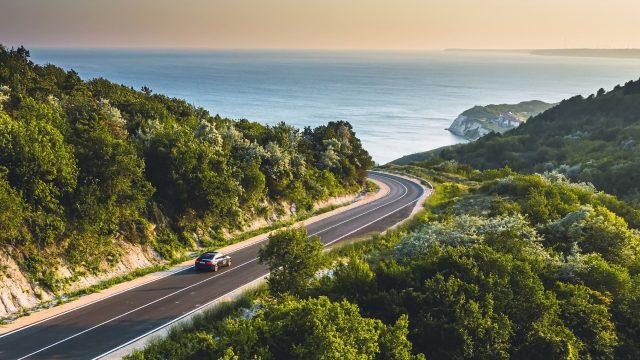When planning a holiday to Tunisia, most imagine a cushy resort with access to pretty white sand beaches that fringe the Mediterranean coast. Beyond the sun, sea and sand, Tunisia packs in enough history, culture and natural beauty to fill a country many times its size.
The Ancient Romans were particularly fond of this exotic country. Some of Tunisia’s most striking historical sites are remnants of that ancient civilization. When the Roman Empire fell, European and Middle Eastern influences crept in and left their colourful impressions everywhere you look.
The country is a treasure trove of cultural gems all waiting to be discovered. So, to get you started here at Economy Car Hire, we’ve come up with a list of 7 unique world heritage sites in Tunisia that are well worth venturing out to explore!
1. Medina of Sousse
Just like in Tunis, the Medina of Sousse is in the old part of the city. Here you’ll find an interesting mix of historical and religious monuments and buildings. Marked by crenelated walls punctuated by round towers, it’s certainly not easy to miss.
Once inside you’ll be greeted by one of the best places to shop in all of Tunisia! There is an enormous array of traditional and souvenir shops which operate on the barter system. Alongside this there are also a number of high street stores.
Get lost in the colourful throngs of people that crowd the streets and alleyways and bag yourself a bargain.
2. The Site of Carthage
Considering Tunisia is no stranger to ancient ruins, the site of Carthage is not the most impressive or best preserved. Scattered across the Bay of Tunis, its location is what makes these ruins so evocative.
The tumbled columns and piles of rubble are framed by a panorama of the Mediterranean Sea. This played a key role in the wealth and prosperity of this fabled seafaring city once ruled by the Phoenicians. But today, the seafront setting achieves the opposite by giving the ruins a poignant ‘lost city’ air.
3. Amphitheatre of El Jem
This Roman Amphitheatre is a testament to the sheer ambition and engineering expertise of the Roman civilization. Built in the early 3rd century AD, this theatre is the third largest arena still standing in the world. In its day it would have seated almost 35,000 spectators.
Amphitheatres were the pinnacle of Roman entertainment. They regularly featured chariot races and savage fights between criminals, prisoners of war, slaves and animals.
These barbaric combats were considered good training for a nation of warriors. This is a story which is depicted in the popular film Gladiator which was also filmed here.
**For an idea of the violent entertainment the blood thirsty Romans enjoyed so much, we’ve dug out a clip from the Gladiator film which features the El Jem Amphitheatre. However, please be warned they didn’t hold back on the gore!
4. Ichkeul National Park
Ichkeul is one of North Africa’s most exceptional national parks. With one look at the scenic views and special flora and fauna, you’ll instantly see why.
Centered on a shallow lake, Ichkeul is home to a number of different habitats for a variety of wildlife. The park is also a well-known bird sanctuary. Over 200,000 geese, storks and flamingos stop here during migration.
See it all on foot and stop by the information centre to pick up a guide on the park’s best hiking routes.
5. The Medina of Tunis
Medina more or less translates to Old Town. This old district of the country’s capital certainly resembles something from centuries passed. The Medina is a higgledy-piggledy maze of winding streets. It is brimming with historic sites, ancient architecture and plenty of character.
The old city gate, known as the Bab el Bahr marks the start of the Old Town and the end of the new. Once you have strolled through it mosques, you will find madrassas and mausoleums that await you on every street corner. All boasting opulent tile work and ottoman architecture.
6. Thugga
Sitting on a craggy hillside overlooking fertile groves Thugga, or Dougga as it’s sometimes pronounced, is one of the best preserved Roman towns in North Africa.
Forgotten by civilisation, Thugga boasts an array of identifiable buildings. These include an amphitheatre, a chariot circus, a large villa, triumphal arches, several baths and even a town brothel!
What makes this Roman town so unusual is the excessive number of temples. The most famous of which is the Capitol, believed to be dedicated to the protective triad: Jupiter, Juno and Minerva.
Just as its buildings were left relatively untouched so too were the extensive mosaics which once covered the floors. Whilst the majority of these are now housed in the Bardo Museum in Tunis some have been left in situ.
7. Kairouan
This ancient walled city is one of Islam’s principal holy cities and one of the first Arabic settlements in Tunisia. The streets of Kairouan are likely to confound you. However, the impressive Great Mosque and Mosque with Three Doors are well worth getting lost for.
As you wander through the alleyways and winding streets you might recognise the setting from Indiana Jones, Raiders of the Lost Ark. The haunting beauty of the place with its crumbling, white-washed houses, some hung with birdcages or marked by the hand of Fatima are hard to forget.
Whilst it may be but a slim wedge of North Africa’s wide expanse, Tunisia is brimming full of unique sights, cities and Roman ruins. The beaches with their balmy, jasmine scented sea breezes may be tempting for a day or two. But, nothing quite satisfies the old travel bug than a good exploration of somewhere’s cultural heritage.
Hunting for history or curious about culture? We’ve got plenty more fab sightseeing destinations here.
Been there, done that, got the t-shirt? Make sure you follow us on Facebook and Twitter and sign up to our newsletter for more travel tips and destination recommendations.
Subscribe to our newsletter
Want our blogs emailed direct to you? Sign up below to get updates featuring our blogs and car hire top tips. Receive the best deals on car hire straight to your inbox.
Written by Jessica Langlands from Economy Car Hire







